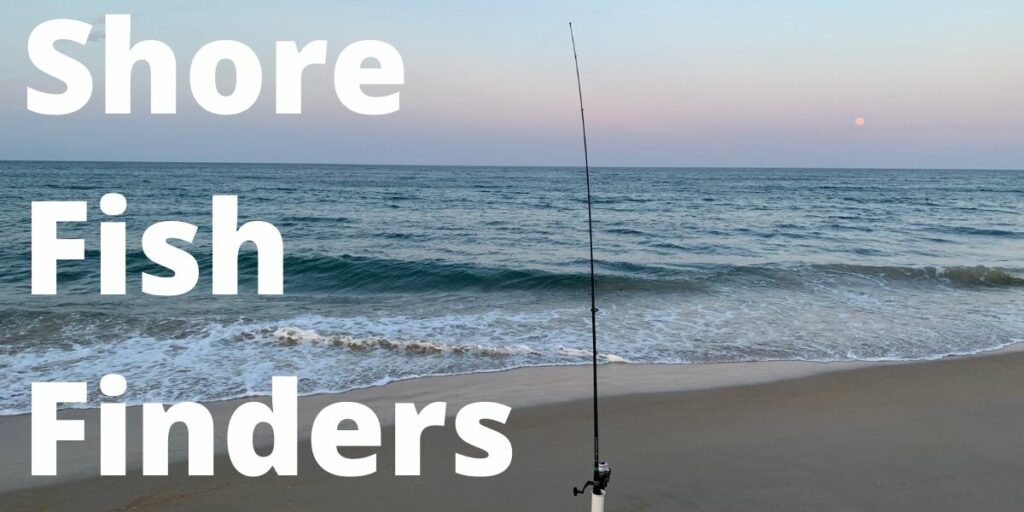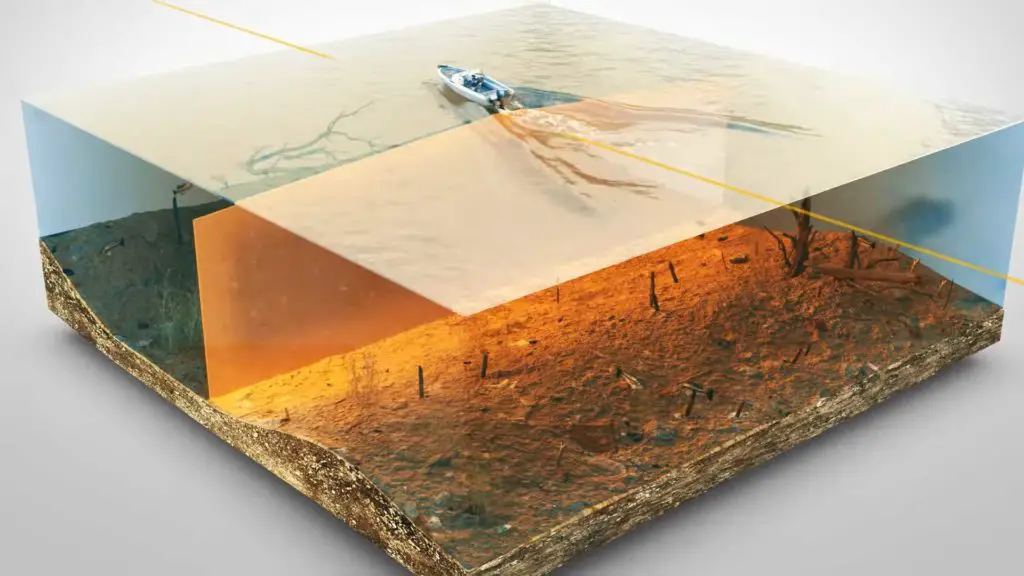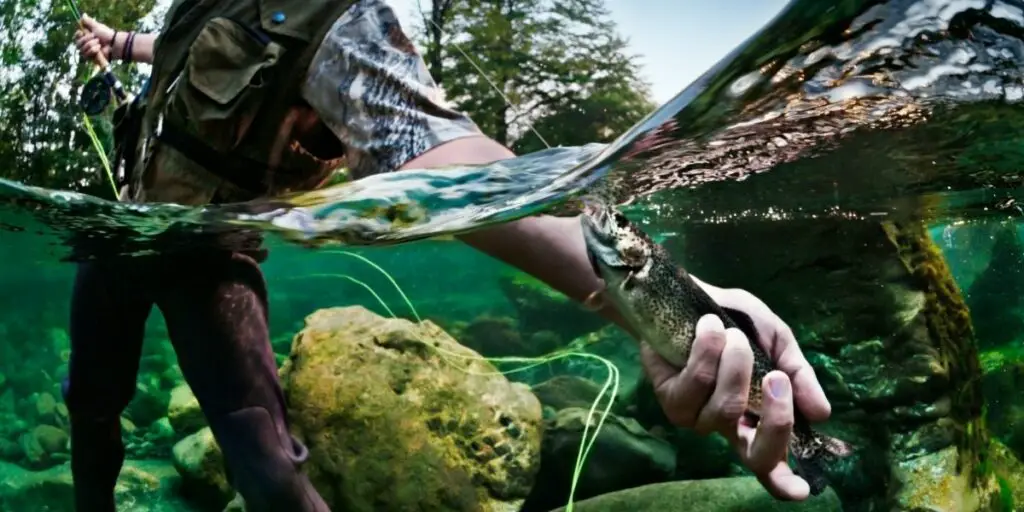You can use a fish finder on the shore. However, using a fish finder to fish successfully on the shore is only possible if you use a model that works for shore or bank fishing.

Table of Contents
Why use a fish finder on the shore?
Sometimes, fishing is about the experience. You wait patiently for the fish to bite, not knowing if at all there are any fish in the water.
But if you want the fishing experience without having to waste bait or spend countless hours to no avail, a fish finder comes in handy.
It increases your chances of actually catching the fish.
While most fish finders are designed to be used when you fish out on the water, you can still use one on the shore.
How does a fish finder work?
A fish finder operates on an electronic system with a transducer and display screen.
The transducer makes use of sonar (sound waves) to pinpoint where the fish are in the water.
It can also register how deep the water is under the surface.
It sends high-frequency sonar waves into the water.

Once the sound waves hit an object on the sea bed, they will bounce and return to the machine.
The machine will now read how far the incoming sound waves are coming from.
The readings on the device will tell you where the fish are and how deep the water is.
Once the fish finder pinpoints where the fish are, the display will usually show little fish figures on the screen, so you know exactly where to go.
How to use a fish finder on the shore
You won’t need to figure out how deep the water is on the shore, but a fish finder does reduce the time you spend fishing without a catch.
Plus, it can help you identify where the big fish are, which you’d normally have to go out onto the water to get.
Here’s how you can improve your catch with a fish finder.

Get to the bottom of things
The shore is known for the small fish. But you will find some big fish at the bottom of the water along the bank.
Big fish go to the shore to hunt for prey. They will lay ambush hidden behind deep holes and underwater rocks to catch small fish near the shore bottom.
You can use your fish finder to scan the bottom of the shore to find the hidden boulders, logs, and underwater holes.
Once you pinpoint these locations, you will likely find the big fish, like bass, hiding in those areas.
Follow the rifts
Shorelines usually create undercurrents, rifts, and bends.
The strong currents will erode the bed over time, creating troughs.
The troughs provide a good hiding area for big fish.
The big fish will hide in those areas to lie in wait for the little fish.
You can use your fish finder to find any of these high current areas.
Once you do, locate the hiding spots like boulders or holes.
Scour the channels
Sometimes, fish will swim in channels created by logs or boulders. You won’t readily see these channels without some help.
Fish like to swim in those areas because they have fewer obstacles- think about how you may find driving on the highway easier than in a crowded city.
Because it’s an easy passage for fish, you’ll find lots of them there.
Make a few trips up and down and across the shoreline. You will notice some deep drop-offs on your fish finder.
Take note of these drop offs and plot a chart showing the areas where you came across them.
The chart will help you figure out the channels that fish may use for traveling.
Once you know where these channels are, you can start looking for the big fish in those areas.
Which fish finder works for shore fishing?
Not all fish finders are built for shore fishing. You will need a good castable fish finder for the job.
For instance, a Deeper PRO+ castable fishfinder or iBobber castable fish finder are some examples of good shoreline fish finders.
Good castable fish finder checklist
- Must be lightweight
- Easily castable
- Good battery life
Boat mounted fish finders won’t do you much good for the shore.
That’s because they are designed to tell what’s in the water below rather than in front of you.
With a castable finder, you can cast it into the water far from you so you can tell what’s under the water in front of you.
You will also be able to tell all that’s going on under the water along the path the fish finder moves across as you reel it in.
Tips for shore fishing with a fish finder
The fish finder’s battery is usually heavy-duty and lasts for hours.
But it will drain your cellphone’s battery pretty fast.
That’s why you may want to consider only using it to point you in the direction of good fishing spots.
Once you locate a good place, it’s back to good old-fashioned patience.
Make sure to charge both your phone and the fish finder before heading out to make your trip more fruitful.
It also helps to buy an easy-to-use fish finder.
You don’t want to have to fiddle with configuration and calibration while you’re trying to enjoy a good fishing trip.
Get a device that’s ready to use as soon as you open the box.
Fish finders make fishing trips more fruitful.
If you aren’t up to going out on the water, that won’t stop you from using one.
You can use a fish finder from the shore easily.
Just remember to get one that works perfectly well for shore fishing, and you’re ready to enjoy some good times angling and actually catch some fish.
